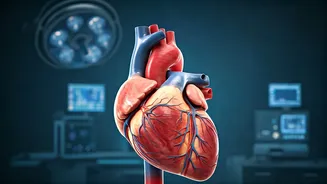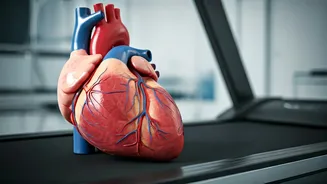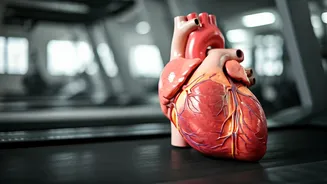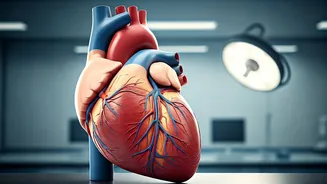Cardio's Crucial Role
Cardiovascular health is paramount, and exercise forms the bedrock of maintaining it. A respected cardiologist has highlighted the significance of specific
exercises that are particularly effective in naturally lowering blood pressure. Regular physical activity not only strengthens the heart but also enhances overall well-being. The benefits extend beyond just the heart, positively impacting various bodily functions. These exercises are not just about physical exertion; they are about fostering a holistic approach to health, emphasizing the interconnectedness of various systems. By engaging in these activities, individuals can significantly reduce the risk of cardiovascular diseases and improve their longevity. Prioritizing these exercises becomes an investment in a healthier and more vibrant future, ensuring that the heart functions optimally, promoting a high quality of life.
Walking's Gentle Power
Walking, a readily accessible exercise, plays a crucial role in promoting heart health. It's often the first step individuals take in their fitness journey. Walking at a brisk pace for even a short duration each day can significantly contribute to lowering blood pressure. This gentle yet powerful activity is suitable for people of all ages and fitness levels. Walking improves blood circulation, which, in turn, helps to improve heart function. The simplicity of walking makes it an easy habit to integrate into daily life, whether it's a stroll during a lunch break or a dedicated walk in the evening. Consistent walking routines lead to a reduction in stress, which is often a significant factor contributing to high blood pressure. Making walking a regular habit is a proactive step towards building a healthier heart.
Running for Efficiency
Running, a more intense exercise, is another very effective activity for enhancing cardiovascular health. Regular running can lead to considerable improvements in lowering blood pressure. The increased cardiovascular demand during running strengthens the heart muscle. This strengthened muscle works more efficiently, and this, in turn, helps lower the risk of heart disease. Running also aids in weight management, which is a vital component of heart health. The elevated heart rate during running improves blood flow and reduces the build-up of plaque in arteries. It's essential to start slow and gradually increase the intensity and duration of runs to avoid injury. Running is a powerful tool to take charge of your heart health, making it an excellent way to maintain a healthy lifestyle.
Swimming's Full Body Benefit
Swimming offers a complete full-body workout that's extremely beneficial for heart health. The buoyancy of water reduces the strain on joints, making it a viable option for a broad range of individuals. Swimming regularly contributes significantly to lower blood pressure and enhances cardiovascular function. The resistance of water promotes muscle strength and endurance, creating a holistic workout experience. Swimming is a low-impact exercise suitable for all ages, including those with joint issues. This exercise enhances the capacity of the lungs, which is vital for heart health. The rhythmic nature of swimming also induces relaxation, reducing stress levels, which benefits blood pressure control. Making swimming a part of your exercise routine can substantially improve heart health and promote overall fitness.
Cycling for Heart Health
Cycling is another excellent choice for heart health. This low-impact exercise builds cardiovascular fitness and is an excellent way to reduce blood pressure. Cycling allows for outdoor exploration and provides a fun way to improve cardiovascular health. The repetitive motion of cycling strengthens the heart muscles and boosts circulation. It can be adapted to various fitness levels, making it ideal for both beginners and experienced individuals. Cycling supports weight management, reduces stress, and enhances overall cardiovascular function. Whether on a stationary bike or cruising the neighborhood, cycling is a fun and effective way to promote heart health. Regular cycling helps build stamina and promotes a healthier lifestyle, reducing the risks associated with heart disease.
Combining Cardio with Balance
Combining cardio exercises with activities that enhance balance can create a well-rounded fitness regimen for optimal heart health. Activities such as yoga or Tai Chi improve balance and coordination, which is helpful to the body. Combining these exercises with cardio routines enhances flexibility, which reduces the risk of injury. Balance exercises also help reduce stress levels. This holistic approach supports a more sustainable fitness routine, making exercise less monotonous. Incorporating balance activities helps optimize cardiovascular function and improves overall fitness. It's essential to listen to your body and adjust the intensity based on your individual needs. By integrating balance exercises into your routine, you can maximize the benefits of cardio and improve overall well-being.













